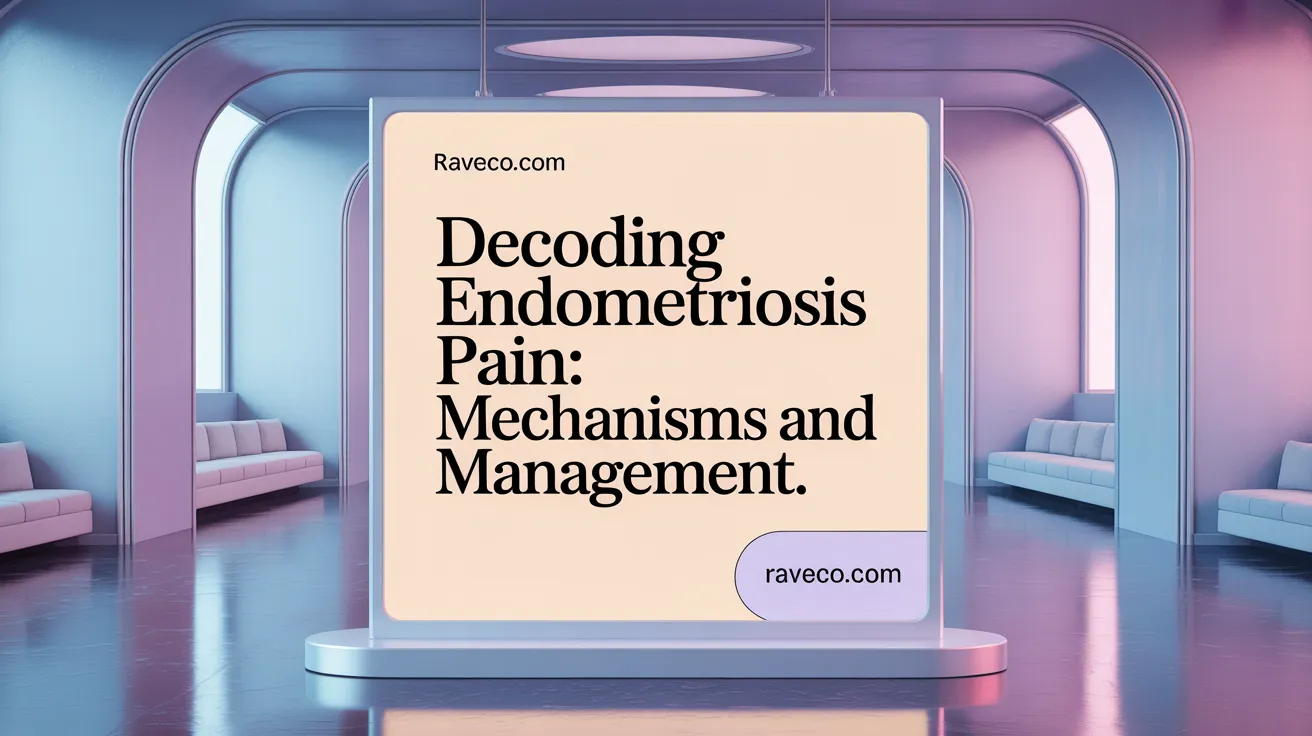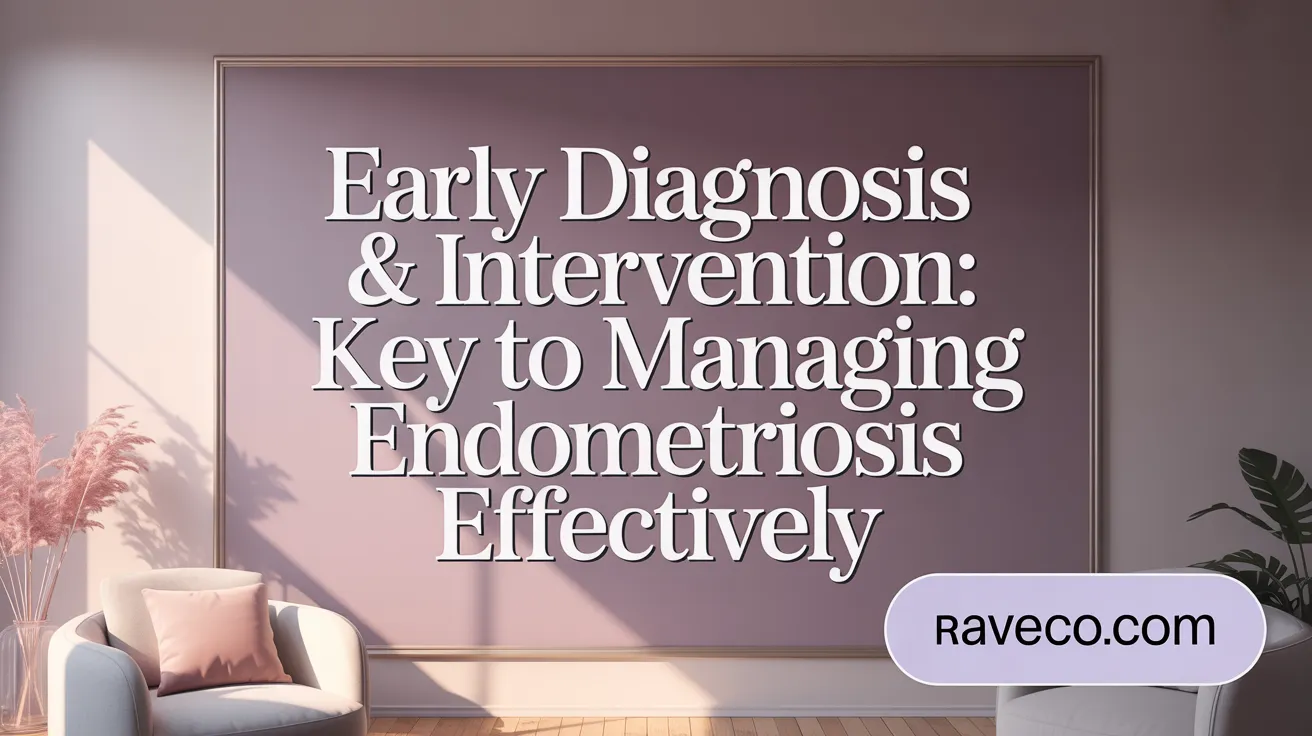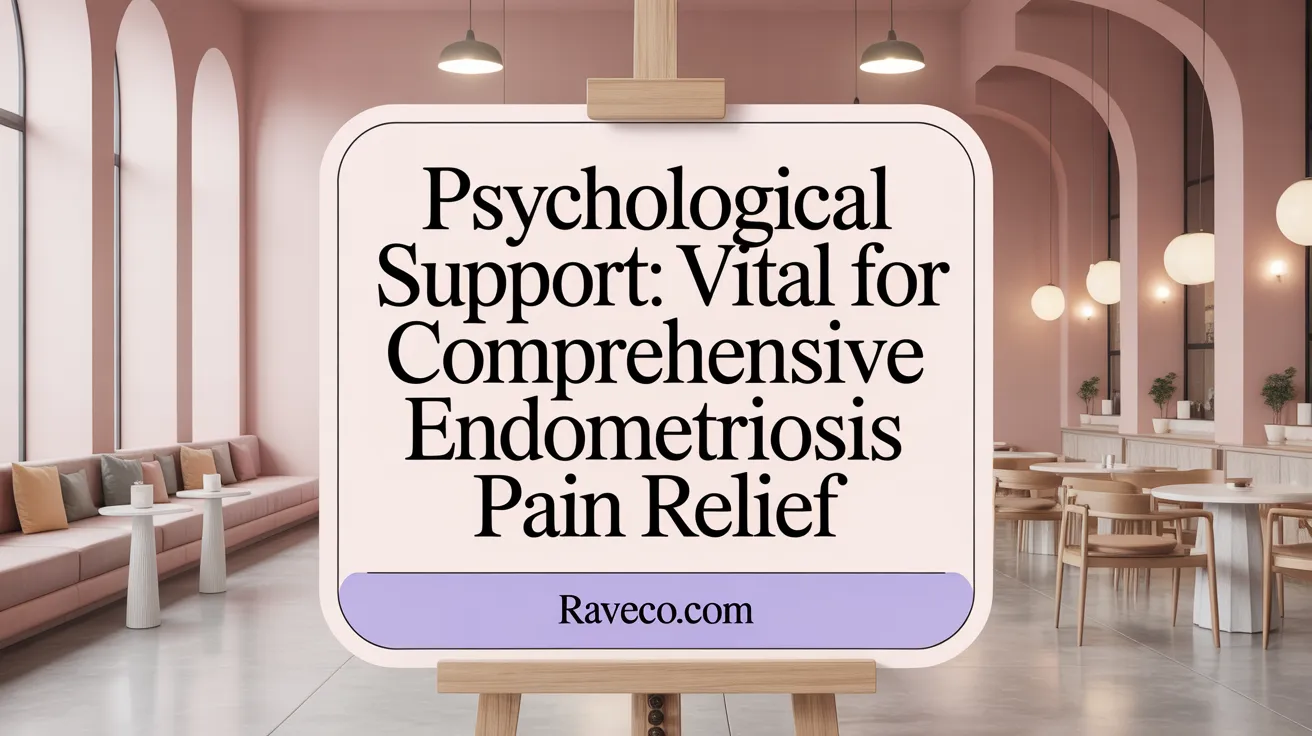How Genetic Counseling Shapes Informed Choices in Prenatal Care

Understanding Endometriosis Pain and Its Challenges
Endometriosis is a chronic condition characterized by the growth of uterine-like tissue outside the uterus, predominantly in the pelvic region. This misplaced tissue undergoes hormonal changes similar to the uterine lining during menstrual cycles but cannot exit the body, causing inflammation, scarring, and severe pain. Affected individuals often experience a spectrum of symptoms including pelvic pain, heavy menstrual bleeding, digestive and urinary issues, sexual discomfort, and fertility challenges. Despite its prevalence, diagnosis is frequently delayed by an average of seven to ten years due to symptom misattribution. While there is no cure, managing endometriosis pain requires a multifaceted approach, combining medical treatments, lifestyle changes, and supportive therapies to improve quality of life.
Medical and Surgical Treatments: Foundations for Pain Relief

What medical treatments are available for managing endometriosis pain?
Medical management of endometriosis focuses primarily on treating endometriosis pain and controlling the growth of endometrial-like tissue. Nonsteroidal anti-inflammatory drugs (NSAIDs), such as ibuprofen and naproxen, are commonly used to relieve pain by blocking prostaglandin production, which triggers uterine contractions and inflammation. These drugs are often first-line therapies for symptom relief.
Endometriosis hormone therapies form another cornerstone, aiming to suppress or regulate the menstrual cycle to reduce hormonal stimulation of ectopic endometrial tissue. Options include combined oral contraceptives, progestin-only treatments, gonadotropin-releasing hormone (GnRH) agonists and antagonists, and aromatase inhibitors. These treatments can decrease lesion size and reduce pain; however, symptoms frequently return after treatment cessation.
Surgical treatments for endometriosis are indicated when medical management is insufficient or fertility preservation is desired. Laparoscopy for endometriosis, a minimally invasive surgery, is the preferred approach for diagnosing and excising or ablating endometriosis lesions and adhesions. This can significantly improve pain and potentially enhance fertility outcomes. In severe or refractory cases, more extensive surgeries such as hysterectomy (removal of the uterus) and sometimes oophorectomy (removal of ovaries) are considered. These procedures generally cause permanent loss of fertility and may induce early menopause, necessitating careful patient counseling.
Choosing the appropriate treatment requires individualized assessment balancing symptom severity, reproductive goals, and potential side effects. Close collaboration with healthcare providers ensures endometriosis treatment options to maximize quality of life and fertility preservation when possible.
Understanding Complex Pain Mechanisms in Endometriosis

What mechanisms contribute to the pain experienced in endometriosis?
Endometriosis-related pain arises from a combination of several complex mechanisms involving both the tissues and the nervous system. For a comprehensive overview, see Endometriosis pain management.
Types of pain involved
The pain in endometriosis includes nociceptive pain, which is caused by the direct irritation, inflammation, and damage of tissues where endometrial-like cells grow outside the uterus. These lesions release inflammatory substances such as prostaglandins and cytokines that activate pain receptors. Details on pain mechanisms in endometriosis explain the inflammatory and nociceptive processes involved.
Nociceptive and nociplastic components
Beyond local tissue inflammation, nociplastic pain plays a significant role. This type of pain refers to altered pain processing by the nervous system without direct ongoing tissue damage. It signifies a hypersensitive pain response where the nerves become more sensitive to stimuli. Read about nociceptive and nociplastic pain in endometriosis for further insights.
Central sensitization and implications
A key feature contributing to chronic pain in endometriosis is central sensitization. This is a condition where the central nervous system becomes abnormally sensitive, amplifying pain signals and causing persistent pain even in the absence of active lesions. Central sensitization explains why some women experience widespread or atypical pain that doesn't always follow the menstrual cycle. For detailed understanding, consult central sensitization and endometriosis pain.
Variability in symptom presentation
Due to these overlapping pain mechanisms, symptoms vary widely. Women may have cyclic pelvic pain linked to hormonal changes, pain during intercourse, chronic lower back pain, and bowel or bladder discomfort. This multifaceted pain presentation underscores the need for comprehensive and individualized managing endometriosis symptoms and endometriosis pain management strategies approaches in endometriosis care.
Multimodal Pain Management Strategies
How can a multimodal approach aid in managing endometriosis pain?
Managing endometriosis pain effectively requires a combination of treatments working together to address its complex nature. A multimodal treatment approach blends medical, surgical, physical, psychological, and lifestyle approaches to provide comprehensive relief.
Combination treatment approaches
Medications such as NSAIDs for endometriosis pain and hormonal therapies for endometriosis help reduce inflammation and hormonal influences on endometrial tissue. Surgical treatments for endometriosis may be necessary to remove abnormal growths when other methods fall short. Together, these form the backbone of treatment, targeting both symptoms and causes.
Role of physiotherapy
Pelvic floor physical therapy plays a vital role in managing pain related to muscle tightness and spasms. Therapists use exercises and relaxation techniques to strengthen and relax pelvic muscles, which can alleviate pain caused by muscle dysfunction and improve mobility.
Psychological support and behavioral therapies
Chronic pain often leads to emotional stress. Behavioral therapies like cognitive behavioral therapy and endometriosis, mindfulness, and stress management aid in coping with prolonged discomfort. These interventions reduce anxiety and improve mental well-being, supporting better pain control.
Dietary adjustments and lifestyle changes
Diet plays a supportive role, with emphasis on anti-inflammatory foods such as leafy greens, blueberries, salmon, and ginger. Avoiding pro-inflammatory foods like processed items, excessive caffeine, and alcohol may help decrease symptoms. Regular low-impact exercise, adequate sleep, and heat therapy for endometriosis pain complement medical treatments.
Complementary therapies
Acupuncture for endometriosis pain has shown positive effects in reducing endometriosis pain when applied regularly. Other options include Transcutaneous Electrical Nerve Stimulation (TENS machine therapy), herbal supplements like turmeric and omega-3 fatty acids, and pelvic massages that enhance blood flow and muscle relaxation.
This integrated approach enables personalized care, addressing both physical symptoms and emotional health to improve quality of life for those with endometriosis.
Medications Beyond NSAIDs and Hormones: Neuropathic and Muscle Relaxants

What other medications can assist in managing endometriosis-related pain?
Beyond the common use of NSAIDs for endometriosis pain and endometriosis hormone therapies, a range of medications target neuropathic pain and muscle spasms to improve symptom control in endometriosis.
Muscle relaxants such as baclofen, tizanidine, cyclobenzaprine, hyoscyamine, oxybutynin, and diazepam help reduce cramping of pelvic and bladder muscles, decreasing associated discomfort. These drugs relax muscles that may become tense or spastic due to endometriosis. These are part of the muscle relaxants for endometriosis often used in pain management.
Low-dose antidepressants, particularly tricyclics like amitriptyline and desipramine, play a role in pain modulation by altering nerve signaling pathways. They are especially effective for managing nerve irritation or injury linked to endometriosis, improving chronic pain symptoms. Further information is available under antidepressants for nerve pain.
Anticonvulsants such as gabapentin, pregabalin, and topiramate target neuropathic components of pain. These medications help calm nerve hyperactivity that contributes to persistent pain sensations. They are part of the anti-convulsant medications for endometriosis pain.
Interventional therapies include nerve blocks and trigger point injections, where local anesthetics are applied to specific nerve sites or muscle spasms within the pelvic floor, lower back, or abdominal area. These procedures serve both diagnostic and therapeutic purposes and are performed under imaging guidance (such as X-ray) to maximize accuracy and safety. While effects are often temporary, they can provide significant pain relief and assist in tailoring further treatment strategies. More details can be found at nerve injections and trigger point injections.
Together, these medications and interventions form crucial elements of a multimodal pain management approach, enhancing quality of life for women with endometriosis experiencing complex pain patterns.
The Role of Lifestyle and Self-Care in Pain Management

How do lifestyle and self-care strategies contribute to managing endometriosis pain?
Lifestyle and self-care strategies are important components in managing the chronic pain associated with endometriosis, often supporting and enhancing medical treatments.
Heat Therapy Applications
Applying heat using warm baths, heating pads, or hot water bottles is a simple yet effective method to relax pelvic muscles and reduce cramping and pelvic discomfort. Heat therapy provides immediate relief by increasing blood flow and loosening muscle tightness around affected areas.
Diet and Anti-Inflammatory Nutrition
An anti-inflammatory diet rich in leafy greens, blueberries, fatty fish rich in omega-3 fatty acids (like salmon), ginger, and turmeric can help reduce body-wide inflammation linked to endometriosis pain. Avoiding processed foods, caffeine, alcohol, and gluten may further ease symptoms. Such dietary choices not only improve overall health but can mitigate some inflammation and pain.
Exercise and Pelvic Floor Strengthening
Regular low-impact exercise, such as walking, swimming, yoga, and specifically pelvic floor exercises, promote the release of endorphins, the body's natural pain relievers. Strengthening and relaxing pelvic muscles via physiotherapy for endometriosis pain can reduce muscle spasms and improve support to pelvic organs, helping decrease the intensity and frequency of pain episodes.
Stress Reduction Techniques and Sleep Hygiene
Endometriosis pain is often worsened by stress and emotional distress. Mindfulness practices, meditation, cognitive behavioral therapy, and other relaxation techniques help manage psychological stress. Additionally, maintaining good sleep hygiene and adequate rest supports hormone balance and reduces inflammation, indirectly aiding pain management.
Use of Natural Supplements and Remedies
Some women find relief using pelvic massages with essential oils like lavender, rosemary, and castor oil, which may improve blood flow and reduce muscle tension. Herbal supplements such as turmeric and omega-3 fatty acids have anti-inflammatory properties and may support symptom control. CBD oil for pain relief is also used by some for pain relief; however, it should be used cautiously and under medical guidance to ensure safety and appropriateness.
In summary, these lifestyle and self-care approaches form an integral part of a comprehensive pain management plan for endometriosis, tailored to individual needs and used alongside medical treatments for endometriosis for best results.
Challenges in Diagnosis and Importance of Early Intervention

Why is endometriosis diagnosis often delayed and how does early intervention help?
Endometriosis diagnosis is often delayed by an average of seven to ten years. This delay occurs because symptoms like pelvic pain, heavy menstrual bleeding, and bowel or bladder discomfort are frequently mistaken for normal menstruation or other common conditions such as irritable bowel syndrome or pelvic inflammatory disease.
Imaging techniques such as ultrasound and MRI can identify ovarian cysts (endometriomas) or deep infiltrating endometriosis affecting certain pelvic organs. However, these methods cannot definitively diagnose superficial endometriosis lesions. Laparoscopy is considered the gold standard for diagnosis—it allows direct visualization of endometrial tissue outside the uterus and provides the opportunity to perform biopsies for confirmation.
Delayed diagnosis carries several risks. Persistent unmanaged pain can significantly affect quality of life. The disease may progress, causing more extensive scar tissue formation and inflammation. Worsening endometriosis can also impair fertility by obstructing reproductive organs or disturbing their function.
Early recognition and diagnosis enable healthcare providers to initiate multimodal and personalized treatment plans. These approaches combine medication, surgery, physiotherapy, and psychological support to manage pain effectively, prevent disease advancement, and improve fertility prospects. Ultimately, early intervention offers better symptom control and enhances overall well-being for women affected by endometriosis.
Surgical Approaches: Scope, Benefits, and Limitations

Types of surgical interventions
Surgery for endometriosis mainly involves minimally invasive laparoscopy for endometriosis, which serves both diagnostic and therapeutic purposes. This approach allows surgeons to directly visualize, biopsy, and remove or destroy endometriosis lesions and adhesions. Conservative laparoscopic surgery is typical, aimed at symptom relief while preserving fertility.
Laparoscopy as diagnostic and treatment tool
Laparoscopy is the gold standard for definitive diagnosis because most endometriosis lesions are not visible via imaging. Beyond diagnosis, it enables excision or ablation of lesions, which can alleviate pain and improve reproductive outcomes. Approximately 70% of women experience significant symptom relief after laparoscopic surgery.
Treatment of ovarian endometriomas
Ovarian cysts caused by endometriosis, known as endometriomas, often require surgical removal when they are large or symptomatic. Smaller, asymptomatic cysts may be monitored with ultrasound. Surgical excision of endometriomas can help reduce pain and improve fertility prospects.
Risks and recurrence post-surgery
Surgical treatments carry risks such as infection, bleeding, and damage to surrounding organs. Despite surgery, endometriosis has high rates of recurrence, and repeated surgeries do not guarantee long-term pain relief. Therefore, surgery is often combined with medical therapies for better management.
Indications for radical surgery such as hysterectomy
For severe, persistent symptoms unresponsive to conservative treatments, radical surgery such as hysterectomy — the removal of the uterus, and sometimes ovaries — may be considered. This surgery results in permanent loss of fertility and can induce early menopause, with accompanying health risks. Hence, it is reserved as a last resort.
Overall, surgical management of endometriosis offers meaningful benefits in pain reduction and fertility improvement but must be carefully weighed against risks and the possibility of symptom recurrence. A personalized, multidisciplinary approach is essential for optimal outcomes.
Psychological and Emotional Support in Pain Management

How does psychological and emotional support aid in managing endometriosis pain?
Chronic pain caused by endometriosis often impacts mental health, leading to increased stress, anxiety, and depression. This emotional burden can worsen pain perception and reduce overall quality of life. To address this, psychological therapies such as cognitive behavioral therapy (CBT) empower patients to develop coping mechanisms and reshape negative pain-related thoughts.
Other therapeutic approaches like mindfulness and acceptance and commitment therapy (ACT) help reduce stress and improve emotional regulation. Relaxation techniques, including guided imagery and deep breathing exercises, further aid in easing tension and modulating the pain experience.
Support groups and counseling provide vital emotional validation and education. Connecting with peers facing similar challenges reduces feelings of isolation and fosters a sense of community, which is essential for emotional healing.
Incorporating these psychological and emotional support strategies as part of a multimodal treatment enhances the effectiveness of pain management by improving patients' mental well-being and resilience.
Integrative Care: The Path to Effective Pain Management
Managing the multifaceted pain associated with endometriosis requires an integrative and individualized approach. Combining medical and surgical treatments with lifestyle modifications, psychological support, and complementary therapies offers the best opportunity to alleviate symptoms and enhance quality of life. Early diagnosis and a multidisciplinary care model ensure that pain is addressed from multiple angles, reducing suffering and improving fertility prospects when applicable. Empowering patients with education, self-care strategies, and emotional support further strengthens coping capabilities. While endometriosis remains a challenging chronic condition with no definitive cure, these effective strategies collectively provide hope and tangible relief to those affected.





.png)